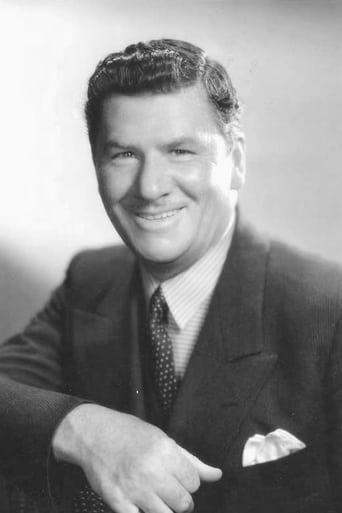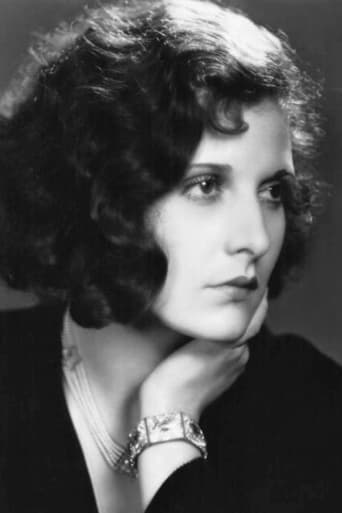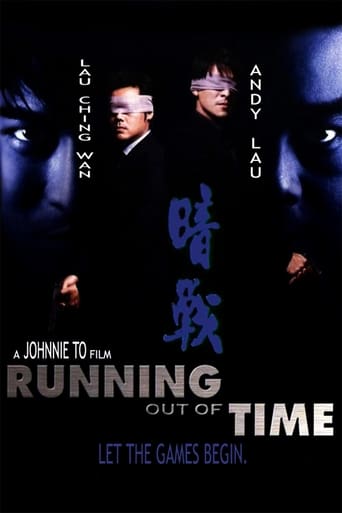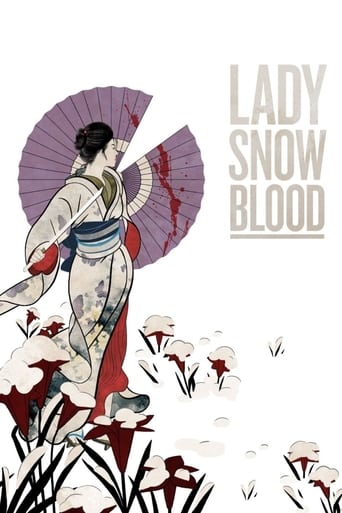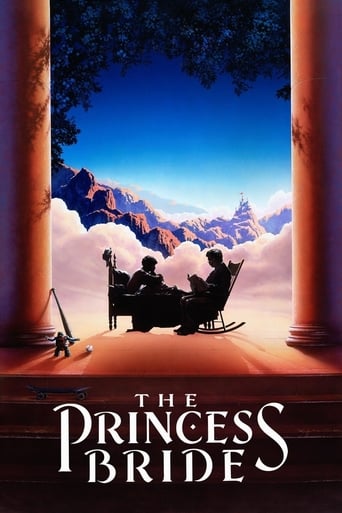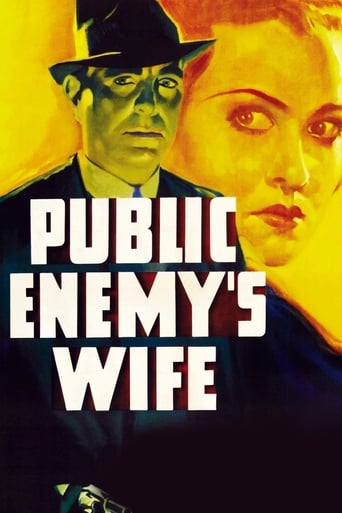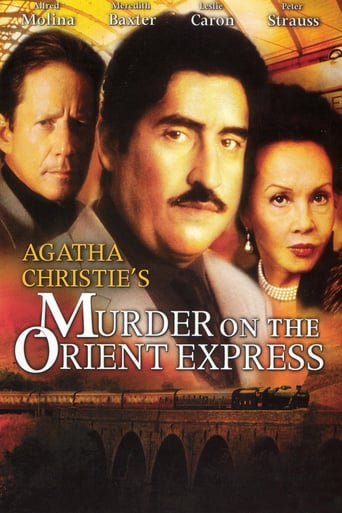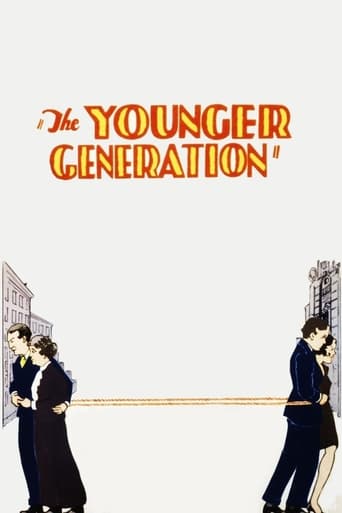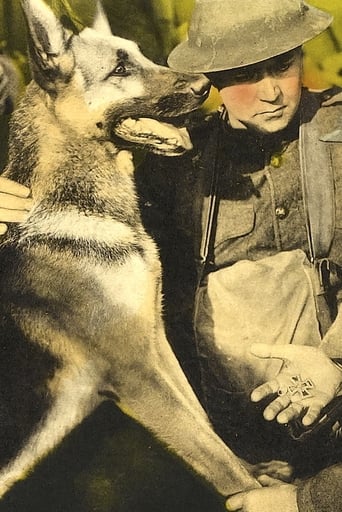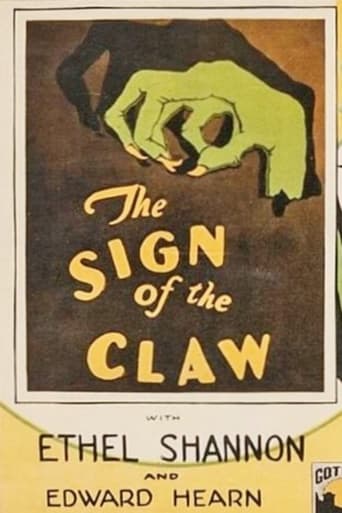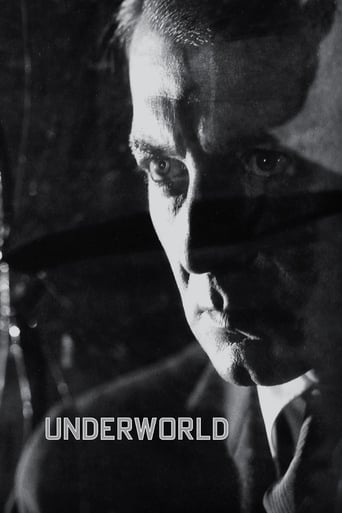
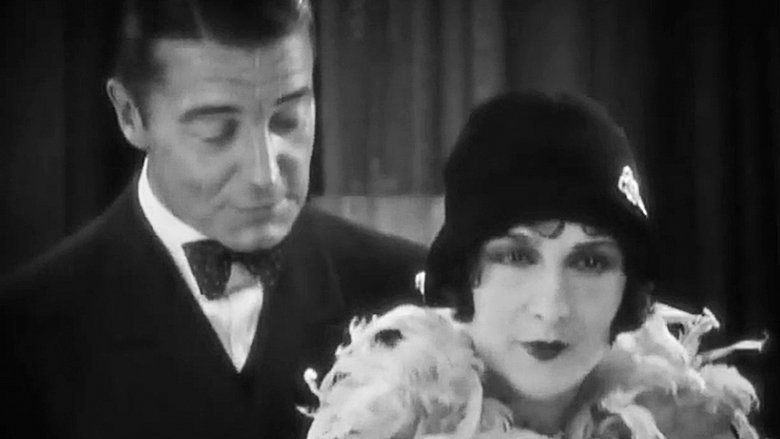
Underworld (1927)
Boisterous gangster kingpin Bull Weed rehabilitates his former lawyer from his alcoholic haze, but complications arise when he falls for Weed's girlfriend.
Watch Trailer
Cast
Similar titles

Reviews
Very very predictable, including the post credit scene !!!
Brilliant and touching
A movie that not only functions as a solid scarefest but a razor-sharp satire.
The story, direction, characters, and writing/dialogue is akin to taking a tranquilizer shot to the neck, but everything else was so well done.
This was a Christmas present to me several years ago. It has atmosphere out the wazoo! You feel like you're there in the midst of all those criminals and their dames! This film is so good, not even the presence of Larry Semon can mess it up! Bull Weed is a man's man and he does what he can right up to the time he's executed! He's also so noble, he goes back to prison to be put to death after taking care of some last-minute business. Evelyn Brent is as she always is, beautiful and a bit petulant. The only reason I don't give this a higher score is because gangster movies really aren't my thing that much. Plus, I like happy endings and executions (which you don't see because the film ends before the switch is thrown) just aren't my cup of tea. However, if you do like silent films and you do like gangster films, this one really is worth your while. Unlike certain other films, this one, I'm sure is available commercially somewhere.
This landmark film was maverick director Sternberg's first studio-made effort after a number of false starts (which are denoted in the excellent accompanying 36-minute video essay on the Criterion DVD). While there had been gangster pictures prior to this (notably D.W. Griffith's THE MUSKETEERS OF PIG ALLEY [1912] and Raoul Walsh's REGENERATION [1915] – which I may be getting to now on the strength of both UNDERWORLD and my concurrent Noir marathon), the Sternberg picture seems to have struck a particular chord with audiences as, we are told, screenings were extended all through the night in order to accommodate the extensive demand! In retrospect, the film only features a handful of action sequences – all of which, however, mark turning points in the narrative. The rest is made up of characterization and atmosphere: the latter obviously showcasing the director's masterful craftsmanship (aided by Bert Glennon's camera-work and Hans Dreier's sets) and the former the handiwork of the celebrated Ben Hecht (though he only supplied the original story, as it was reworked by others for the finished version including Sternberg himself) – still, Hecht (who had initially disowned it) was rewarded with an Academy Award at the very first Oscar ceremony! Interestingly, Howard Hawks is also said to have been involved in the 'scenario': if anything, he and Hecht (who particularly objected to Sternberg's ending) would supply their own gangster milestone in SCARFACE (1932), which left no room for sentimentality in its uncompromising approach and made no apologies for the anti-hero's ambitions by substituting "World" upon reprising this film's scrolling neon sign "The City Is Yours"! Hawks, alone, then, would much later borrow the nick-name of the leading lady here, "Feathers", for his RIO BRAVO (1959)! For the record, Sternberg is quoted as having said "I care nothing about the story, only how it is photographed and presented". This is perhaps evidenced here by the dearth of typical gangster activity: we never know just what Bancroft's racket is, a robbery/frame-up and capture/trial are depicted via a series of quick shots, while both the opening bank job and Bancroft's eventual escape from prison are picked-up when they are almost over. The elimination of his rival (since actor Fred Kohler looks and scowls a lot like Lon Chaney, I could not help imagining him in this role and what his collaboration with Sternberg might have been like!), too, occurs over the latter's unwarranted attentions towards his girl.Incidentally, as with THE RACKET (1928), this adopts the beefy businessman-like gangster prototype (presumably inspired by the real-life Al Capone) but, soon, a more dynamic – and nuttier – variety would emerge and supersede it, exemplified on the screen by the likes of James Cagney and Paul Muni. Indeed, while the mobster here i.e. George Bancroft would remain active within the genre (I will be checking out his well-regarded BLOOD MONEY [1933] presently), it is telling that he is seen – both literally and figuratively – being wiped out by Cagney in ANGELS WITH DIRTY FACES (1938)! Other stereotypes on display are the hoodlum's learned associate (as played by Clive Brook, who actually starts out as a bum!) and a 'funny' sidekick (forgotten comic Larry Semon, who eventually falls by the wayside even in this case!).The heroine, played by Evelyn Brent, is once again a pretty forceful character (Sternberg seemed to have a particular knack in this area, which would obviously reach its zenith with his 7 films featuring Marlene Dietrich) and predictably comes to prefer the suave Brook over her uncouth lover/boss Bancroft. Despite their mutual affection, the two however decide to stand by the gangster (who, having been alerted as to their 'betrayal', is all ready to exact vengeance) and, following a remarkable siege at the mob hide-out, what we get is a surprisingly philosophical resolution to the dilemma!
Underworld (1927)A lot of people avoid silent films at all costs, and I understand that totally. Many of these films are stiff, and the plots are either sentimental or obvious. But there are many reasons to watch a good, or great, silent film. Sometimes the acting, whatever its expressive style, is really wonderful. Often the photography and editing is really terrific and sophisticated. And the stories can be fast, fresh, and even pertinent.And finally, the silent films easiest for the uninitiated to approach are at the very end of the silent era. That would be 1927. See Joan Crawford in The Unknown for the bizarre, or Murnau's Sunrise for eloquence, or consider this film, the first major film by the soon to be legendary Josef von Sternberg. The only thing that might put off some people is the exaggerated expressions in one of the three main characters, Bull Weed. But go with that flow and you'll see not only some more subtle acting, but a sweet, violent, complex plot interweave in just an hour or so (81 minutes, though there is an 87 minute version out there if you can find it, Netflix doesn't have it). The Criterion disc version is really clean (another reason to consider this as an intro silent films, since it isn't broken up or scratched to death)."Underworld" is filmed with visual complexity even though it lacks some of the virtuosic moving camera of Murnau. The sets are simple but convincing, and the shift in attention to the gangster side of the story, complete with guns and molls and the precursors (or pre-precursors) of film noir, is gripping. It's not as intense as the heyday of gangster films just four or five years later, but it has if anything more emotional sophistication. The story was written by the legendary Ben Hecht, which might explain some of its success.Von Sternberg you say? Well, he was a master at creating aura, and between him and Dietrich a whole new level of starmaking savvy was born. This, as a first film, and as a last minute replacement, was expected to flop, and was released in a single New York theater. Word spread, however, and it became a hit. You can see why. Great stuff.
One of the great joys of prohibition-era gangster films is the colorful dialogue spat out by the likes of James Cagney and Edward G. Robinson. As that element would, obviously, be missing from a silent film, I wasn't sure how I would react to Underworld.Not to worry. This is a great film, one of the best prohibition-era gangster films I've seen, ranking slightly ahead of Little Caesar and the Public Enemy, and maybe only slightly below Scarface (1932). Tough, tense, tightly written--interestingly, Howard Hawks is credited for the scenario--and with gorgeous DARK cinematography and Josef von Sternberg's usual excellence in direction. I barely missed the lack of gangster-speak.I suppose this film was a template upon which a lot of gangster films were based. It struck me while watching it how much it had in common with the Coen brothers' Miller's Crossing (1990)--a love triangle between a mob boss, his moll, and his right hand man. And it's all about the gangsters' peculiar code of ethics.I'd rate it a perfect 10, but for a muddled and badly-handled prison break sequence, which I watched three times and still couldn't figure out. Maybe I'm just dense; maybe it was actually a genius bit of filmmaking and it just flew over my head, but for now, 9/10.
